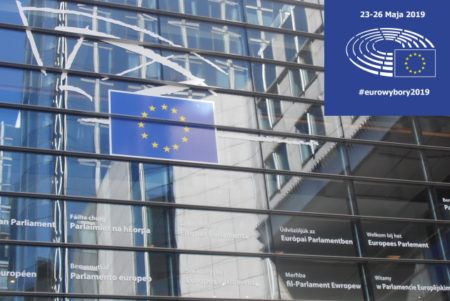VILHELMIINA VULKKO
In the 751-seated European Parliament, Finland has only 13 seats. As a result of the last European elections, held on 26th of May, these 13 seats were attributed to seven different parties. Even though the Finnish political scene is very divided, we can still say that the results of the euro elections followed the same trends as were seen at the European level.
The results
The National Coalition Party (Kokoomus) turned out to be a winner of the Finnish poll. Traditionally being the biggest party in the euro elections since 1999, it came first also in 2019 with 20,8 % share of the votes which translated into three seats in the European Parliament (EP). National Coalitions Party, considered as centre-right and liberal-conservative party, is pro-European and support close relations with EU and continued European integration. The National Coalition Party has very active electorate. That partly explains its good score in the European elections which in general has quite low turnout (42,7%). Also, majority of the voters of the National Coalition Party are well educated which makes them more aware of the EU-level matters, and that partly explains the interest to influence in EU matters more actively.
Second place went to the Green League (Vihreät) that gained 6.7% of votes in comparison with the previous European elections. In total, the party received 16% of the national votes and thus secured two seats in the EP. This is their best result ever at the European level. Social Democrats (Sosiaalidemokraatit) got the third biggest share of votes (14.6%) and also two seats in the Parliament, which for them means no changes compared to the previous term. However, the result was a little disappointment to the party, since last April they won – although marginally – the Finnish Parliamentary Elections.
Against all expectations, the Finns Party (Perussuomalaiset)[1] ended up only in the fourth place with 13.8% of the votes. This translated into two places in the European Parliament (a one seat more than in the previous term). The Finns Party is a populist national-conservatism party and the only Eurosceptic party in the Finnish government. They oppose further economic and political integration of the EU. Therefore, “putting an end to the federalisation of the EU, exit from the euro-area and stopping uncontrolled immigration” play key roles in the Finns Party’s EU Policy.
Despite their electoral gains, the result was still a disappointment to the Finns Party which came second in the Finnish Parliamentary Elections in April, and was high in pre-electoral polls. The remaining 4 seats were divided between the Centre Party (two seats), the Left Alliance (one seat) and the Swedish People’s Party of Finland (one seat).
The real winners and losers of the European elections in Finland
Even though the National Coalition Party got the biggest share of the votes, it is considered that the real winner of these elections was the Green League which managed to increase their support (by 6,7% compared with their previous European elections and by 4,5% with the recent Finnish Parliamentary Elections). In addition, if the Brexit takes place, the Green League will gain one additional seat in the European Parliament, further strengthening their position on the political scene.
These elections showed that among Finns there is an increasing call for EU actions on climate change and the European integration. And the Green League is the only party in Finland who answers directly for these calls, highlighting the importance of acts against climate change. Together with the so-called “Green Wave” – which was seen around the Western Europe during these elections[2], the general awareness of climate change matters have increased from the previous European elections. Therefore, the Green League could benefit from this European trend and has managed to achieve the second place in Finland.
In contrast and against all odds, the so-called loser of the elections was the Finns Party. Even though they got the second biggest share of the votes in the Finnish Parliamentary Elections in April, they could not maintain the same level of support during the European elections. In fact, they got only half of the votes they got in the Finnish Parliamentary elections. This means that the Finns Party could not activate their voters for the elections on the European level.
The result at the European level
As a result of the elections to the European parliament in 2019, Finland has now 11 MEPs who support stronger and more integrated Europe[3] and two MEPs who are in favour of Finland taking distance from Brussels[4]. Thus, the Finnish representation in the European Parliament stays mostly euro positive.
When we look at the results at the European level, one can say that they followed trends including the rise of the Green movement and step down from the traditional division between the left and the right. Nowadays we can identify a new division between nationalists and globalists, even though the EPP and the Social Democrats kept their status as the biggest parties in the EP.
For the most part, this was also seen in Finland. In addition, in Finland (but also in Europe) these elections showed that even though populist parties gained a lot of support and visibility before the elections, the demand for stronger and more united Europe is still more prevalent among the Europeans. It thus seems clear that in a constantly changing world, Finland needs Europe and Europe needs Finland.
[1] Known as well as “True Finns”
[2] For example in Germany, UK, Belgium and France
[3] They will probably join following groups: S&D-2, EPP- 3, ALDE (Renew Europe)-3, Greens – 2, GUE-1
[4] They will join the ENF/ID group in the EP.

